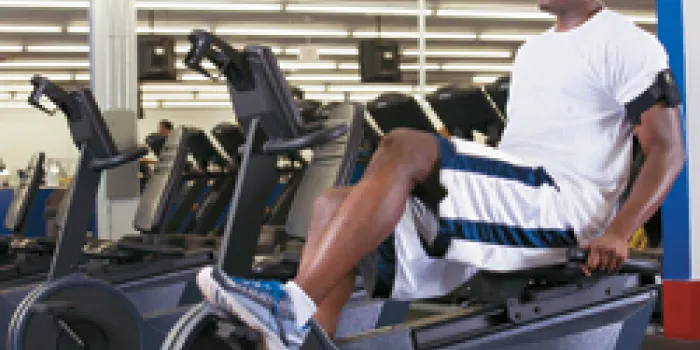Mary Ellen Ciganovich, 59, works out nearly every day, but for her, exercise is anything but routine. She engages in interval training, where steady exercise is punctuated by short bursts of intensity. It gets her heart rate up, keeps her weight down and helps her maintain excellent health, despite having severe von Willebrand disease, multiple sclerosis and epilepsy.
“Ever since I was a kid, I’ve always had to fight to be healthy,” says Ciganovich, a poet and inspirational speaker who lives outside Chattanooga, Tennessee. Her first book, Healing Words: Life Lessons to Inspire, was published in February 2011. “I’ve never let my illnesses hold me back.”
At the gym, Ciganovich hits the cardio equipment and takes classes, including step and cardio dance, both of which incorporate interval training. “Interval training keeps you from getting stuck in a rut,” she says.
Kay Craig, PT, recommends interval training to many of her patients. “Changing things up as you work out makes exercising more fun, plus it doesn’t allow your body to adapt to a routine,” she says. She is a physical therapist at the Idaho Regional Hemophilia Center at St. Luke’s Regional Medical Center in Boise.
If you always exercise at the same steady pace, your body eventually will become accustomed to it, diminishing the benefits. To work your heart and muscles to a greater degree, you need to vary your workout. That’s where interval training comes in.
[Steps for Living: Exercise and Activity Options]
Pump It Up
Interval training is simply a matter of occasionally picking up the pace as you work out. For example, in the middle of your workout on a stationary bike, pedal harder and faster for 30 seconds to one minute. This speeds up your heart rate. Then dial it back down to your previous pace. A few minutes later, push yourself hard again for a short interval. Repeat this process until you finish exercising.
Those bursts of speed help burn more calories, strengthen your heart and lungs, and increase insulin sensitivity, all of which are key for preventing a host of chronic illnesses, including diabetes and heart disease.
To keep from working your heart too hard for too long, your heart rate should be about 60% to 65% of its maximum during your workout, says Craig. Every few minutes, though, you kick your heart rate up to the 80% to 85% range for a brief spurt of energy.
To determine your maximum heart rate, subtract your age from 220. For example, if you are 40, your maximum heart rate is 180; 80% of that is 144. Craig advises her patients to use a heart rate monitor while they exercise to know exactly what their heart is doing at any given moment.
Choose Your Exercise
One advantage of interval training is that it can be done with any type of exercise. Beginners are especially encouraged to train in intervals as they get used to exercising. “If you are going to start biking, for example, you want to ease into it by riding at a fairly easy clip for two minutes, then really pumping the pedals for 30 seconds, and then slowing down again,” says Craig.
Craig advises repeating this routine for about a week, then slowly increasing the amount of time you push yourself. Eventually, you will adapt to an increased pace, and you’ll be able to stick to it, adding short bursts of speed to briefly bump up your heart rate. Follow this same pattern for any cardiovascular exercise, from swimming or walking to using an elliptical trainer.
Protect Your Joints
Before beginning interval training, talk to both your primary care physician and physical therapist about your heart and joint health. “Make sure to get cleared cardiovascularly,” Craig says.
It’s critical not to stress an existing target joint. Craig recommends bicycling as a low-impact cardio exercise. If you have access to a pool, swimming can be very beneficial for people with bleeding disorders. It provides a full body workout with very little stress on your joints.
Whatever exercise you choose, you should warm up for a few minutes and then stretch. At the end, cool down and stretch some more.
Then reap the rewards. Says Ciganovich, “Interval training has always helped me stay balanced and focused. Exercise helps with everything.”

